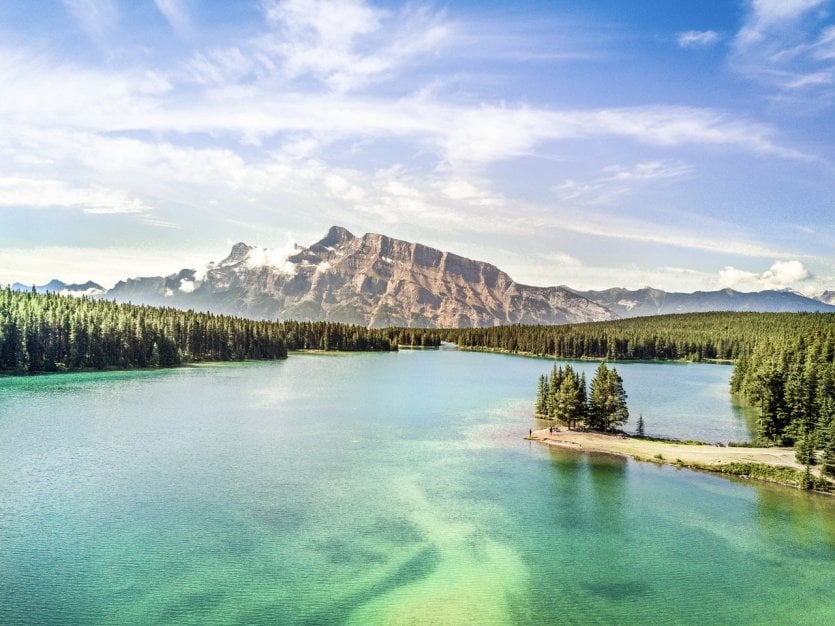
Alberta is a province in western Canada and many of its must-see features reflect the power of nature, from the peaks of the Rocky Mountains to canyons, vast coniferous forests, waterfalls and beautiful lakes formed by glaciers that have now disappeared. These crystal-clear lakes are surrounded by beautiful nature, offering lovers of wide open spaces magical walks and views worthy of the most beautiful postcards. Whatever the season, a trip to Alberta promises unique moments of deep communion with nature, a breath of fresh air and an enchanting interlude that is hard to miss. A stay with Comptoir des Voyages is the promise of living those moments and making the beauty of Canadian nature a reality
Lake Louise, the jewel of Banff National Park
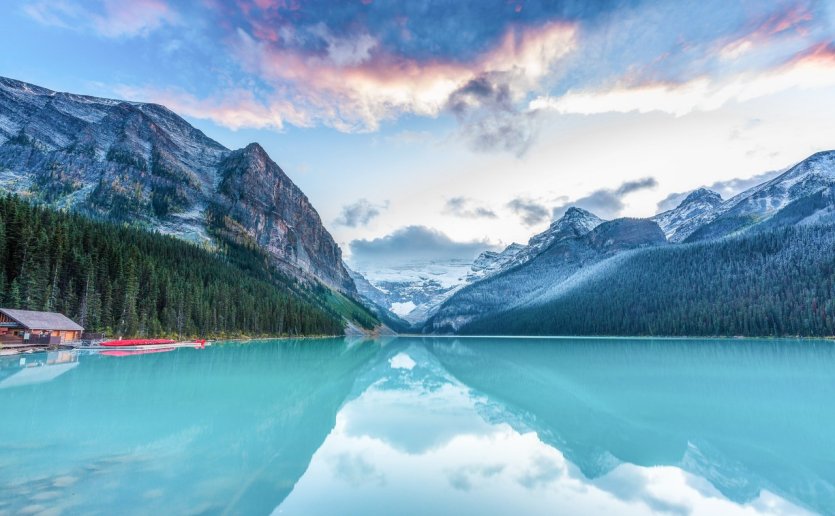
Lake Louise is a real treasure and one of the most popular lakes in the Canadian Rockies. It is interesting to know that it was named after one of Queen Victoria's daughters, a historical element that inevitably adds to the charm of the site. Nestled in the heart of the wilderness of Banff National Park, it remains small, but no less splendid. How can you not be amazed by the turquoise blue of the water and the snow-covered mountains all around? It is very easy to get there, as it is not far from the town of Banff. On an expedition to this natural wonder, don't miss the opportunity to warm up over a cup of tea at the Fairmont Chateau Lake Louise, a hotel that sits on its shores. From this location, you can enjoy an exceptional view of this pearl of the Rockies and the Victoria Glacier shining in the background. The show is so striking that one almost has the feeling that Lake Louise is the work of an artist.
Maligne Lake to Jasper National Park
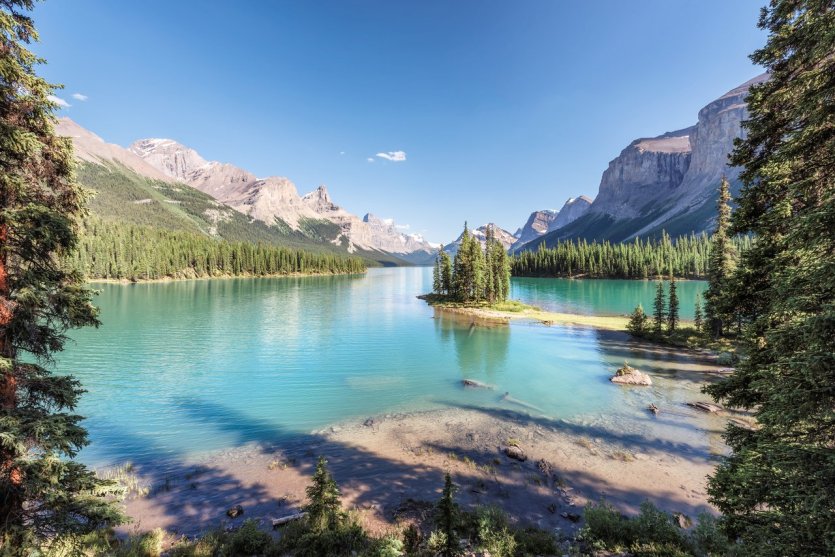
Jasper National Park is home to another western Canadian wonder: Maligne Lake, fed by the Coronet Glacier. It is one of the largest glacial lakes in the Canadian Rockies. Renowned for the beauty of its turquoise waters, it is good to know that they remain cold even in summer and for good reason, the lake is at an altitude of 1,690 metres. 22 km long, it is also famous for its Spirit Island, which can be reached by boat. It is one of the most photographed sites in Western Canada. The multiple points of view that are offered should also not be overlooked. After strolling through the Maligne Canyon, you must go to Hanging Valley Viewpoint and stop, simply to breathe in the fresh air and enjoy a sumptuous view of the Athabasca Valley. While hiking in the area, it is not uncommon to come across superb wildlife, including elk, bighorn sheep, bears and caribou. Binoculars are an instrument that should be carried in your bag at all costs.
Moraine Lake, another pearl of Banff National Park
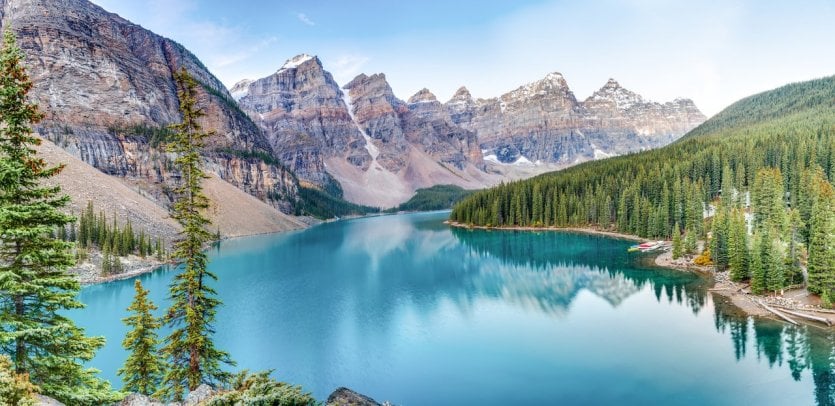
A trip to Lake Louise is followed by a trip to see another splendour of Banff National Park: Moraine Lake. Located at an altitude of 1,885 metres in the valley of the Ten Peaks, the beauty of its turquoise waters, fed by the Wenkchemna glacier, is most impressive. Surrounding them are coniferous forests in which you can sink and slalom between the trees. It is also during these walks that we come across animals, including bears. Be careful to be accompanied by professionals and experts of the place. You should also think about taking the easy hiking trail that offers a sublime view of Mount Fay, a must in the region. Moraine Lake is another pearl of the Canadian Rockies and those who wish to canoe there are welcome to do so. Reaching the middle of the lake also offers a remarkable viewpoint to contemplate the beauty of the surrounding nature, to the rhythm of the water
Peyto Lake, a breathtaking site
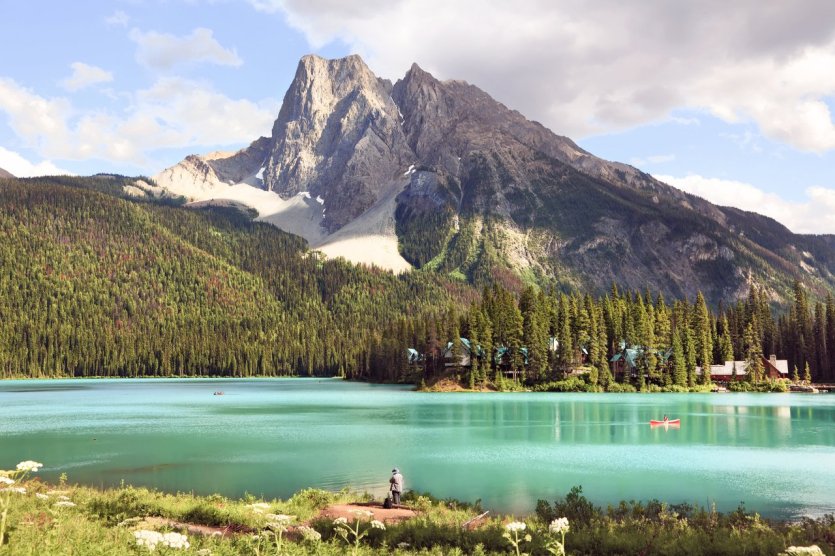
Amidst thick coniferous forests, again in Banff National Park, Peyto Lake has everything to surprise travellers. First of all, there is its incredible turquoise colour, due to the mineral particles in suspension. The best view can be enjoyed from Bow Summit, the highest vantage point on the famous Icefields Parkway, which overlooks the site. Here we discover an important detail: the lake takes the shape of a wolf's head. The wolf, a faithful inhabitant of high mountain environments, one almost comes to wonder how nature could have created such a magical spectacle. In summer, it is magnificent to be able to see the reflection of the snow-covered peaks in the lake, this creates a sumptuous setting that one should not miss to photograph, playing with the luminosity. Between the white of the snowy peaks, the clear colour of the lake, the grey of the mountain rocks and the green of the trees, the gradation of colours is striking and it is easy to see why Peyto Lake is one of the most popular with visitors to Western Canada
Lake Minnewanka, a semi-artificial lake of glacial origin
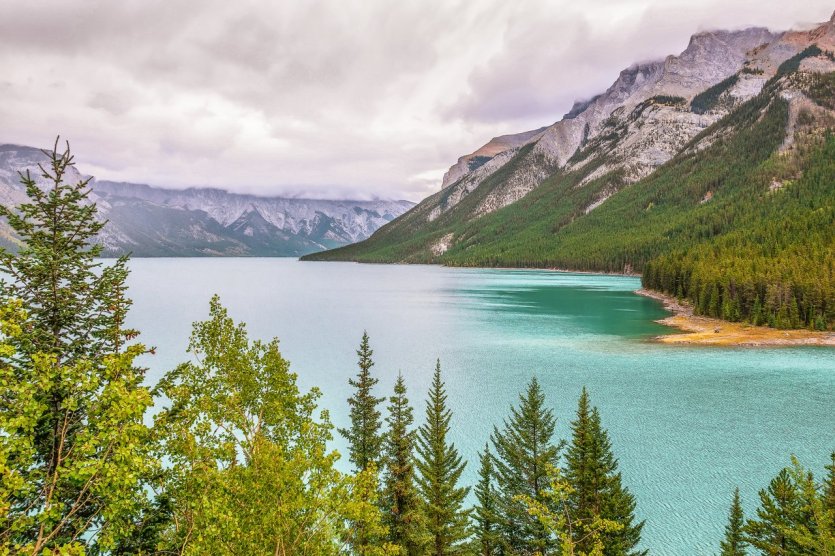
Lake Minnewanka is simply the largest in Banff National Park. It takes its name from an ancient belief that it is populated by spirits. In the language of the Stoney Indians, Minnewanka means "Lake of Spirits". The vast body of water is 28 kilometres long and 142 metres deep, making it a great site for boat cruises and enjoying a calm and peaceful place with mountains and forests as a backdrop. In summer, it is pleasant to practice fishing and some diving sessions. In fact, there are many activities available to visitors to Lake Minnewanka, not just aquatic activities. It is also very enjoyable to walk around the lake and try to spot animals such as elk, bighorn sheep or bald eagles. Exceptional wildlife to observe in a natural environment. Bears are also the other inhabitants of the area, so always be careful when hiking and be accompanied. The lakes of the Canadian Rockies are a marvel of nature, open spaces for multiple activities, to be carried out in harmony with the beauty of the place.


